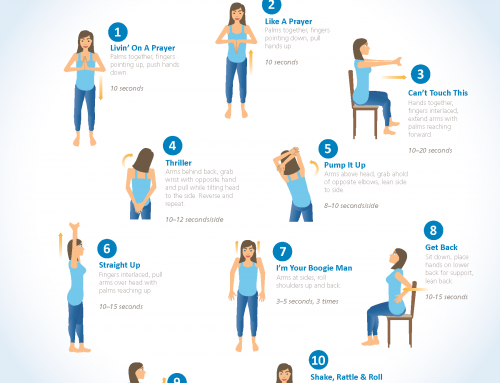Workers that do not Return to Work (RTW) experience a significant reduction in their overall income. There is a potential for delayed RTW and/or RTW to an inappropriate position due to absent or delayed communications with employers or the claims professional. As case managers, we refer to the Case Management Society of America (CMSA) Standards of Practice guiding principles, interventions and strategies when reviewing our internal processes that impact the injured worker. These guiding principles are targeted at the achievement of stability, wellness and autonomy through various principles including communication, education, collaboration and facilitation.
CompAlliance believes with increased efforts to facilitate obtaining Job Descriptions and RTW discussions with the employer, claims professional, Injured Worker and physician, a more timely and consistent RTW will result. To address this issue, CompAlliance developed a Quality Improvement Project (QIP) as part of our upcoming URAC re-accreditation titled, “Consistent Return to Work Facilitation”.
An article that assisted CompAlliance to formulate our processes was the article by ACOEM titled, “Preventing Needless Work Disability by Helping People Stay Employed”. This report focused on workers with a medical condition that should normally result in only a few days of work absence, who end up withdrawing permanently or for prolonged periods of time from work. For many of these workers, their condition began as a common problem, a sprain, strain, depression or anxiety, but escalated into a short-term, long-term or permanent disability. Their premise was these absences were potentially preventable, and posed unfortunate consequences for both the employer and employee.
“The fundamental reason for most lost workdays and lost jobs is not medical necessity, but the non-medical decision-making involved in and the poor functioning of a little-known, but fundamental practice employed by U.S. and Canadian disability benefits systems – the stay-at-work/return-to-work (SAW/RTW) process.”
This article gives an excellent overview of the usual stay at work/return to work (SAW/RTW) model we as a nation, employ. However, they also describe an alternative model pointing out only a small fraction of medically excused days off work are medically required – meaning any kind of work is medically contraindicated. From a strictly medical point of view, people can generally work at something productive as soon as there is no specific medical condition to keep them from working. The key question is what kind of work?
In addition, I participate on the IAIABC RTW committee; we are formulating a paper on RTW that addresses misconceptions and reality regarding the RTW process as it relates to ALL stakeholders. This work has also helped to formulate the RTW processes at CompAlliance.
CompAlliance has developed several approaches within our SAW/RTW protocols. Within our QIP we track that each CM addresses and facilitates a RTW discussion with the physician, employer and claims professional at the initiation of case referral and at the time of each evaluation by the physician.
We have developed several products to assist in this facilitation. The first step for the case manager is to begin a discussion at the time of file referral with the employer, injured work and claims professional, entailing a request of a copy of any job descriptions, potential light duty positions, etc. If these materials are not available, we will with authorization, enlist the services of our Certified Ergonomic Assessment Specialist (CEAS) Vocational Consultants to get the conversation started and potentially schedule an onsite visit.
The CompAlliance Vocational Consultants can perform a Job Analysis of the current position to assist with the rehabilitation process, and to foster a SAW/RTW discussion with ALL stakeholders. We recently developed a Targeted Light Duty Assistance (TLDA) Program for use by employers and claims professionals. This can be used for individual claims or to develop a Job Bank of transitional light duty positions at the place of employment. These positions can also be developed to coincide with specific common diagnoses.
BENEFITS OF COMPALLIANCE TARGETED LIGHT DUTY ASSSISTANCE (TLDA)
- Facilitates a potential Return to Work at First Appointment
- Demonstrates a Defined Rehabilitation Process is in Place
- Reduces likelihood of Disability Syndrome
- Maintains Open Communication with the Injured Worker
- Provides for a Productive Workforce
- Cuts TTD costs (Can save a minimum of 2 – 3 months of TTD)
- Lowers the Overall Cost of a Claim
- Retains the Injured Worker in their Work Environment
- Keeps the Injured Worker on a Positive Schedule
- Clarifies the Light Duty Position for ALL Stakeholders – Employer, Claims Professional, Medical Case Manager, Legal Team and Medical Providers
- Develops a TLDA Individual Job Description or TLDA Job Bank that can be used on Current and Future Claims
An additional option is the CompAlliance Transitional Duty Management (TDM) and Alternative Transitional Duty (ATD) Program. TDM assists the employer to develop a transitional task program. A Medical Case Manager (CM), sometimes also with the assistance of the CompAlliance Vocational CM, assists the employer to identify transitional tasks and define the essential functional requirements necessary to perform these tasks. During the program, the CM works with the employer, the injured worker, the physician, and the claims professional to ensure success and facilitate a progressive return to regular work duties.
As the injured worker’s functional capabilities increase, the CM works with the employer to adjust the functional requirements of the transitional duty position. All stakeholders are kept apprised throughout the process.
When there is no transitional duty available at the worksite, CompAlliance offers our Alternative Transitional Duty (ATD) Program, during which the Vocational Consultant identifies a position for the injured worker within their current functional capabilities, typically within 1 – 3 business days. Transitional duty at the place of employment or the CompAlliance ATD program, bridges the timeframe between the initial injury lost time and either a return to regular work duties or when accommodation of residual disability in accordance with the Americans with Disabilities Act (ADA) must take place.
BENEFITS OF A TRANSITIONAL DUTY MANAGEMENT (TDM) OR ALTERNATIVE TRANSITIONAL DUTY (ATD) PROGRAM
Some of the benefits of the CompAlliance Program include:
- Recovery progresses quickly and successfully when there is a combination of early mobilization, treatment and increased transitions back to a normal way of living
- Increased communication between all parties
- Statistically the injured worker has a much higher chance of a successful and timely eventual return to their job of injury
- Documents ADA compliance activities
- Provides meaningful temporary duty in a positive environment when the ATD program is utilized
- Facilitates attendance at physical therapy or physician appointments through coordinating a flexible work schedule
CompAlliance realizes there are other aspects to the SAW/RTW process that may need to be recognized including addressing co-morbidities including physical and psychosocial diagnoses and their potential impact on the rehabilitation process, or preexisting perceived communication issues between the injured worker and the employer, just to name a few.
Whichever plan is appropriate, the CompAlliance Medical Case Manager works with ALL stakeholders throughout the process to assess, facilitate communication, develop a Case Management Plan to overcome any barriers, develop Short and Long-Term Goals, Evaluate the Results and make Additional Recommendations to address any ongoing Barriers to the SAW/RTW Process.




